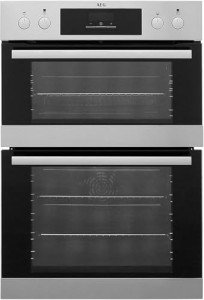5 Laws That'll Help Those In Integrated Oven Sizes Industry
Understanding Integrated Oven Sizes: A Comprehensive Guide
Integrated ovens have become associated with modern-day cooking areas, using sleek aesthetics and effective cooking solutions. As house owners aim for a smooth look in their cooking areas, comprehending integrated oven sizes ends up being essential for optimizing kitchen designs and guaranteeing effective cooking. This short article delves into the different integrated oven sizes offered in the market, their measurements, and how to choose the ideal one for your home.
What is an Integrated Oven?
An integrated oven is designed to be built into kitchen cabinetry, supplying a streamlined look that blends easily with the rest of the kitchen. Unlike freestanding designs, integrated ovens can be hidden behind kitchen cabinetry doors or positioned at eye level, making them a popular choice for modern kitchen areas.
Secret Features of Integrated Ovens
- Space-saving design: Optimizes kitchen area without jeopardizing style.
- Personalized finishes: Available in various colors and materials to match kitchen design.
- Advanced innovation: Often geared up with modern-day functions, consisting of clever innovation, varying cooking modes, and energy-efficient operations.
Common Integrated Oven Sizes
When thinking about an integrated oven, the most crucial element to examine is its size. Integrated ovens come in numerous dimensions, generally designed to fit basic kitchen cabinets. The following table outlines the most typical integrated oven sizes:
Oven Type
Height (mm)
Width (mm)
Depth (mm)
Cooking Capacity (litres)
Single Built-In
590
595
550
60-70
Double Built-In
590
595
550
60 (each oven, total 120)
Compact Built-In
450
595
550
30-40
Mix Microwave
455
595
550
30-40
Wall Oven
720
600
550
70-90
Factors to consider When Choosing an Integrated Oven Size
When it comes to picking the proper size for an integrated oven, there are numerous factors to consider:
- Kitchen Layout: Evaluate your kitchen space and decide where the oven will be integrated into kitchen cabinetry.
- Cooking Needs: Consider how often you cook and your culinary choices (e.g., baking, roasting).
- Readily available Space: Measure readily available cabinets dimensions to guarantee the oven fits comfortably.
- Capability Requirements: Assess the size of meals you usually prepare, particularly for families or when entertaining guests.
- Future-proofing: Think about integrating patterns such as smart innovation or flexibility in use.
Types of Integrated Ovens
Integrated ovens are available in a number of types, each offering unique benefits:
- Conventional Ovens: Standard cooking functions, suitable for most cooking techniques like baking and roasting.
- Steam Ovens: Utilize steam for cooking, ideal for healthier meals, maintaining moisture and nutrients.
- Convection Ovens: Circulate hot air for even cooking, terrific for baking pastries and multiple dishes at the same time.
- Microwave Ovens: Offer fast reheating or defrosting choices and can be combined with standard ovens for flexibility.
Advantages of Integrated Ovens
Integrated ovens supply various advantages that can enhance the cooking experience:
- Aesthetics: Offers a clean style that fits effortlessly into any kitchen décor.
- Area efficiency: Maximizes space by utilizing built-in cabinetry.
- Ergonomics: Mounting ovens at eye level improves benefit and security when removing hot dishes.
- Increased functionality: Many integrated choices feature features such as self-cleaning and wise connectivity.
Often Asked Questions (FAQs)
1. What is the standard size for an integrated oven?
The most typical size for a single built-in oven is roughly 590mm in height, 595mm in width, and 550mm in depth.
2. Can I set up an integrated oven in an existing kitchen?
Yes, as long as the existing cabinets can accommodate the size and specifications of the chosen oven, it can be integrated perfectly.
3. Do integrated ovens have a larger capacity than freestanding ones?
Usually, integrated ovens have a similar capacity to freestanding designs; however, particular styles may differ. Constantly check the specs for optimal space and capability.
4. Are integrated visit my homepage than freestanding ovens?
Integrating an oven can be more expensive due to setup and customization. However, rates vary based upon brand name and technology, so it's important to compare alternatives.
5. Is upkeep different for integrated ovens?
Maintenance for integrated ovens resembles that of freestanding models but may require more care with built-in kitchen cabinetry parts. Routine cleaning and understanding the oven's features are vital for durability.
Selecting the ideal integrated oven size is crucial for optimizing kitchen space and boosting culinary experiences. By comprehending the various setups available and thinking about individual cooking requirements, house owners can effortlessly integrate a contemporary oven into their cooking areas. With a series of designs to fit varied visual appeals and performances, integrated ovens stay a popular option for contemporary cooking spaces. Whether you're renovating or constructing a brand-new kitchen, picking an integrated oven customized to your needs will guarantee years of fulfillment and culinary imagination.
